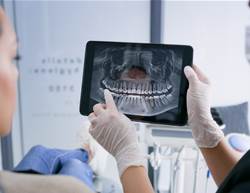Heart disease now kills more than twice as many Australian women as breast cancer, with approximately 20 women dying every day from cardiovascular disease—yet there remains widespread confusion about what heart attack symptoms in women actually look like.
Sometimes a heart attack can be as dramatic as it appears on screen, with someone gasping and clutching their chest. But more often, especially in women, the symptoms are far subtler. Many simply don’t believe they’re experiencing a heart attack and delay seeking help—even though every minute counts. “We have a saying that ‘time is muscle’,” says cardiologist Dr Holly Andersen.
Since heart attack symptoms can mimic less serious conditions, women often lose crucial treatment time as they wait to see if the discomfort passes before seeking help. If you believe you’re having a heart attack, call 000 immediately.
“There’s the perception that a woman would never think she’s having a heart attack, so she’s going to assume it’s everything else instead,” says Dr Marla A. Mendelson. “Women often take a wait-and-see approach—too busy to have a heart attack right now—and too many women are dying from them,” adds Dr Andersen.
The good news: many people go on to live full lives after a heart attack. The sooner you get help, the better your chances of recovery.
What exactly is a heart attack?
Unlike cardiac arrest—when the heart suddenly stops beating—a heart attack occurs when the blood flow that delivers oxygen to the heart muscle slows or stops. “Essentially what’s happening is that the arteries in the heart are unable to provide sufficient blood flow to the working heart muscle, and most commonly this is due to atherosclerosis,” says cardiologist Dr Erin Donnelly Michos.
Atherosclerosis occurs when the arteries narrow due to a build-up of plaque made up of fat, cholesterol and other substances. Although plaque accumulates gradually, a heart attack is triggered when plaque ruptures and forms a clot, blocking blood flow. This obstruction starves the heart muscle of oxygen and begins to damage it. “This is why it’s an emergency—if the heart muscle dies, it doesn’t repair itself,” says Dr Michos.
What are the symptoms of a heart attack in women?
Extreme fatigue
Feeling tired or sleepy is normal after a busy day juggling work, family and other responsibilities. But exhaustion so overwhelming that you can barely move—especially when combined with muscle weakness or other symptoms—may be a warning sign of a heart attack. A study has found that unusual fatigue was one of the most commonly reported symptoms among women who later experienced a heart attack, followed by sleep disturbance and shortness of breath.
Indigestion
Surprisingly, a heart attack can feel like you have eaten something that did not agree with you. Because the heart sits just above the stomach, a burning sensation in the chest may be mistaken for indigestion. “We still see women staying home because they think they have indigestion and are treating themselves with antacids,” says Dr Mendelson. If indigestion feels unusually intense, lasts longer than normal, and does not respond to antacids, seek medical care immediately.
Jaw and back pain
Reduced blood flow to the heart can cause pain that radiates outwards, sometimes into the jaw or back, and it may even feel like a toothache. Everyone perceives pain differently, says Dr Mendelson: “It’s the perception of the symptoms.” For women, this pain can be more diffuse rather than the classic “clutching chest” pain often portrayed in men.
Heartburn
Just as a heart attack can feel like indigestion, some women mistake it for simple heartburn. “The heart sits right on top of the oesophagus, so sometimes heartburn can feel like a heart attack, and a heart attack can feel like heartburn,” says Dr Michos. If the discomfort comes on suddenly, lasts longer than five to seven minutes, and does not ease with rest, it could be a sign of a heart attack.
Shortness of breath
Feeling winded after a jog or a spin class is normal. But if you’re struggling to catch your breath while sitting still or find yourself unable to climb the same set of stairs you take every day, it could be a warning sign of something more serious with your heart.
Even if chest pain is not present, unexplained shortness of breath can still signal a heart attack. “I always tell patients that if they think something is wrong, they should seek immediate medical attention, as everyone experiences a heart attack differently and the absence of chest pain does not mean it’s not your heart,” says cardiologist Dr Amy Sarma.
Left arm pain
Sudden pain in the left arm is one of the better-known signs of a heart attack. Like jaw or back pain, this occurs because the brain can’t always pinpoint where the pain originates. Sometimes, it may radiate into either arm, though the left side is more common. “Because the nerve endings all come into the spinal column at the same place—from the upper arm, from the chest—the brain can’t pick out that it’s actually happening in the heart,” explains Dr Mendelson.
Nausea
Because the heart sits so close to the stomach, a heart attack may trigger nausea and other symptoms that mimic an illness, such as feeling clammy, dizzy, or light-headed. “The heart is your major vital organ, and when it’s not getting enough blood flow and the heart muscle starts to die, people feel incredibly sick,” says Dr Michos.
Chest pain
This is the most well-known sign of a heart attack: a crushing heaviness, pressure, or sudden tightness near the heart. “It can feel like pressure, squeezing, or tightness in the chest,” says Dr Michos. “That’s the typical presentation.” If you experience this, it’s vital to seek medical attention straight away.
What to do if I think I’m having a heart attack
Call for help immediately. Do not waste time calling your GP or a family member first—alert them later. Paramedics can begin life-saving treatment on the way to hospital, which improves your chances of recovery.
When you arrive at the emergency department, explain that you think you are having a heart attack and ask for an ECG (electrocardiogram) and blood test. These are the quickest ways to confirm or rule out a heart attack. If you feel your symptoms aren’t being taken seriously, make it clear that you are experiencing chest pain, as this is the red-flag symptom most likely to trigger urgent action.









